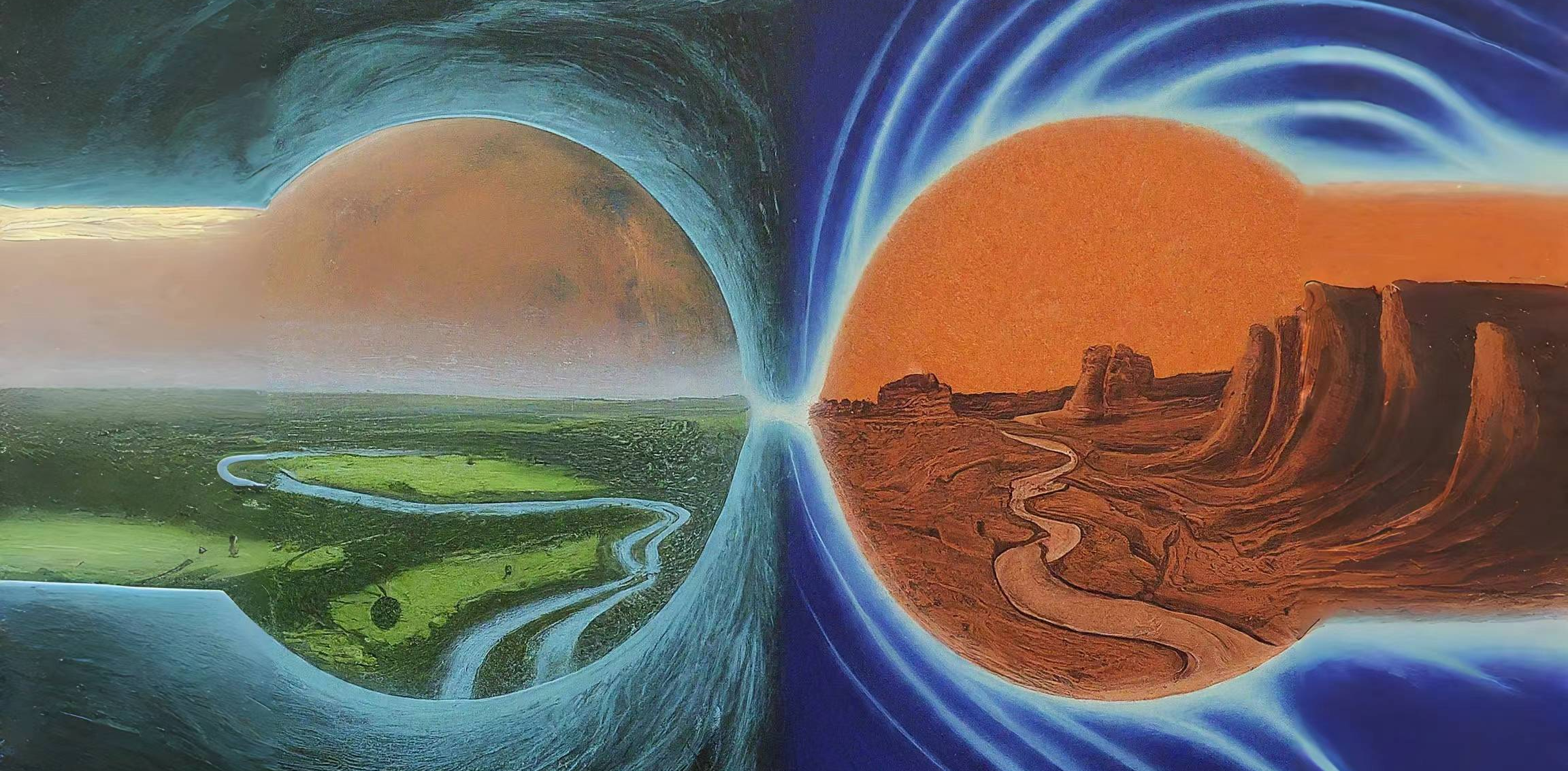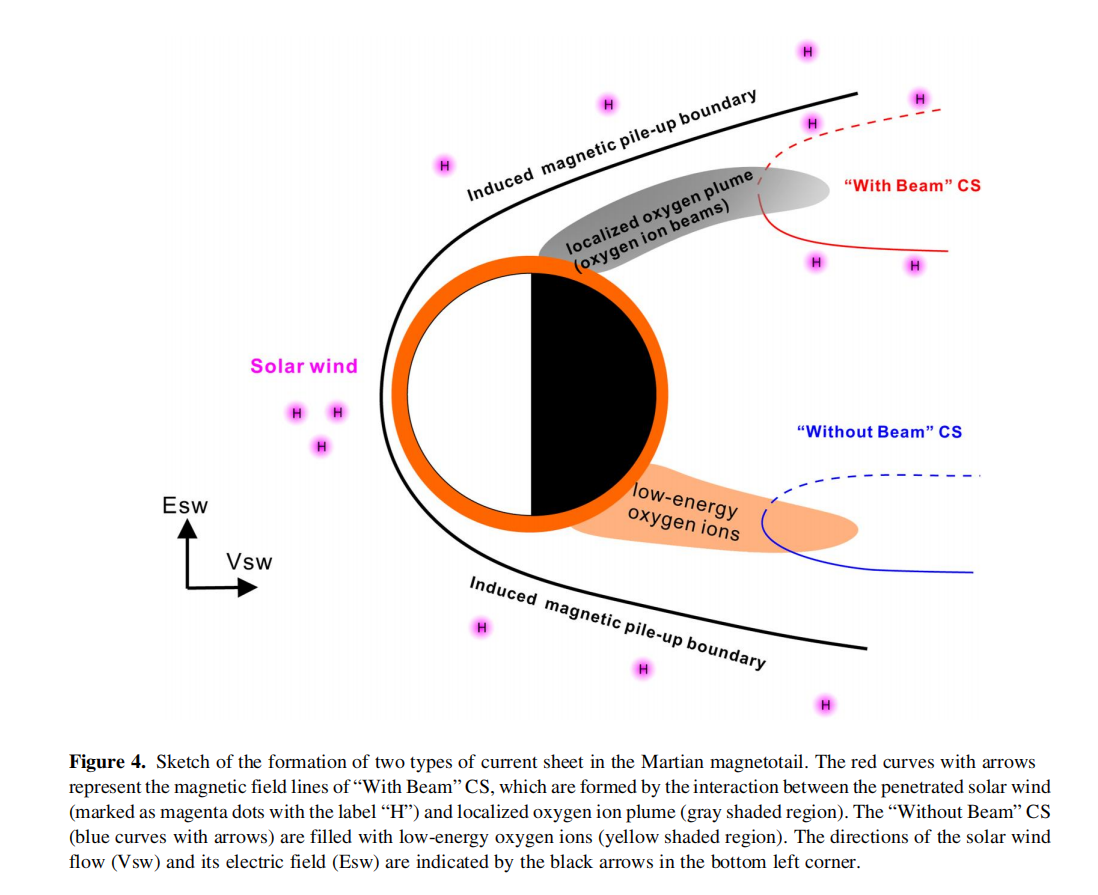Mars: From Water World to Desolate Wasteland - What Happened?

Mars, much like Earth, occupies a position within the habitable zone of the solar system. It boasts a varied topography, including majestic mountains, expansive plains, and meandering river channels. Scientists speculate that around 3.7 billion years ago, Mars could have been a potentially habitable world. However, in stark contrast to its ancient potential, Mars has undergone a transformation, becoming a desolate and inhospitable planet with a thin atmosphere, dry conditions, and frigid temperatures.
 China’s Zhurong Mars rover captured this panorama of the Red Planet.
China’s Zhurong Mars rover captured this panorama of the Red Planet.
The intriguing questions emerge: Where has Mars’ atmosphere and water gone? How did they escape? Currently, the scientific community posits that solar wind serves as a significant mechanism driving the escape of Mars’ atmosphere and water into space. This phenomenon involves the relentless flow of charged particles emitted by the Sun, exerting a transformative influence on the Martian environment.
Scientists from Institute of Geology and Geophysics, Chinese Academy of Sciences, have made an intriguing discovery about the planet’s magnetotail current sheets, shedding light on how ions escape from its atmosphere. The magnetotail is the region on the nightside of Mars where the planet’s magnetic field is stretched out by the solar wind, forming a long, trailing tail-like structure, and the current sheets are thin layers of electric currents flow.
The findings, based on data gathered by the Mars Atmosphere and Volatile EvolutioN (MAVEN) mission, provide valuable insights into the complex interaction between Mars and the solar wind.

Imagine a kite flying in the wind. As the wind blows against the kite, it creates a force that pulls it away. Similarly, the solar wind, which is a stream of charged particles emanating from the Sun, interacts with the Martian atmosphere and exerts a force that causes some ions to escape into space. These escaping ions play a crucial role in shaping the evolution of Mars’ atmosphere over time.
Researchers have focused their attention on the magnetotail. In this region, there are current sheets, which are like layers of charged particles. These current sheets act as channels for ion escape. However, within these current sheets, scientists have noticed something unusual.
They discovered that some current sheets exhibit energetic oxygen ions that form narrow beam structures in the energy spectrum. It’s as if these ions are concentrated in specific areas, like beams of light. On the other hand, there are current sheets without these energetic oxygen ion beams.
To understand this phenomenon, let’s compare it to a river. In some parts of the river, the water flows smoothly and evenly. But in other areas, there are rapids or whirlpools where the water becomes more concentrated and intense. Similarly, the presence of energetic oxygen ion beams indicates areas within the current sheets where the escaping ions are more focused and have higher energy levels.
Interestingly, the current sheets with energetic oxygen ion beams have been found to have a higher flux of escaping ions compared to those without beams. It’s like comparing two leaky buckets. One bucket has a small hole, allowing only a few drops of water to escape, while the other bucket has a larger hole, resulting in a steady stream of water pouring out. Similarly, the presence of energetic oxygen ion beams suggests that certain current sheets provide a more efficient pathway for ions to escape into space.
Moreover, the plasma properties within these current sheets with energetic oxygen ion beams differ significantly from those without beams. Plasma refers to the state of matter composed of charged particles. This difference in properties indicates that the two types of current sheets have different origins.
By studying these unique characteristics, scientists believe that the current sheets with energetic oxygen ion beams may result from the interaction between the solar wind and localized oxygen ion plumes. It’s like a collision between two forces, creating a distinct phenomenon.
Understanding the dynamics of ion escape is critical for unraveling the mysteries of Mars’ atmospheric evolution. These findings contribute to our knowledge of how ions escape into space and provide valuable insights into the complex interactions between planets and their surrounding space environment.
As scientists continue to explore Mars, missions like MAVEN help us uncover the secrets hidden within the Red Planet’s magnetotail. Each discovery brings us closer to understanding the fascinating processes shaping our neighboring planet and deepening our knowledge of the universe.
https://agupubs.onlinelibrary.wiley.com/doi/10.1029/2023GL107190



